Spanish-style homes are immensely romantic, inviting, and inspirational. These architectural gems are hard to resist. Spanish-style homes have a timeless elegance and a rich history behind their evolution. For people who appreciate the beauty of classic architecture, Spanish-style homes are a true inspiration. The design blends modern comfort with traditional elements, which is why many people across the world prefer this style.
If you are here with an eagerness to explore the intricacies of Spanish architecture, we’ve got you covered. This blog will serve as your guide, sharing all the details of the Spanish style and its history and highlighting the subtle features of enhancing Spanish homes. Let’s together explore these classic treasures of Spanish-style homes.
What Is a Spanish-Style House?
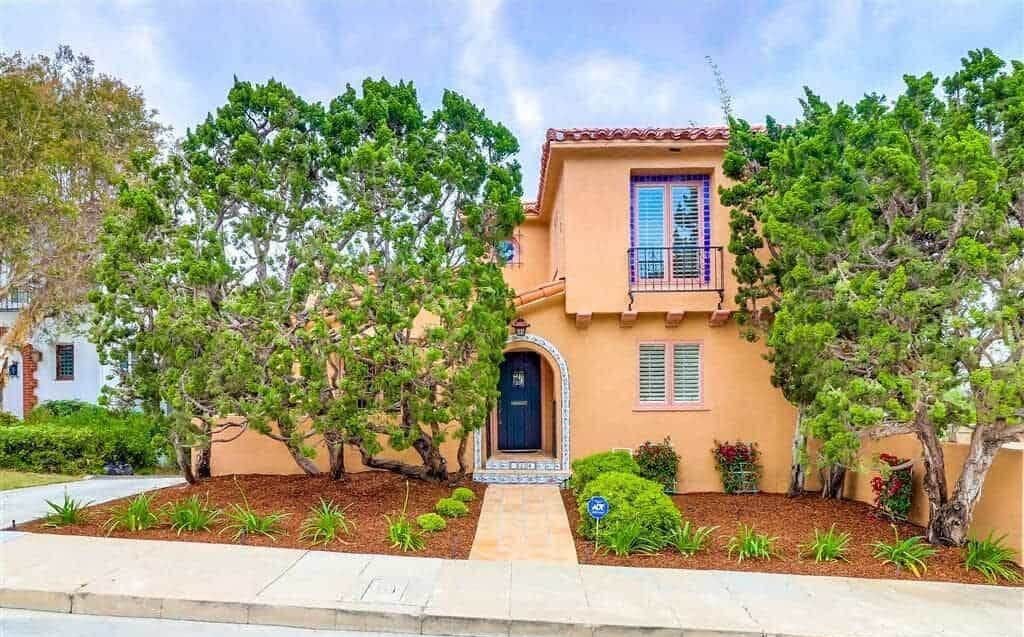
Spanish-style houses, also known as Spanish Colonial Revival homes, are timeless architectural homes inspired by the colonial architecture that evolved under Spanish rule. The distinctive features that take you back in time are Stucco walls, red terracotta roofs, decorative wrought iron elements, arched windows, and doorways.
The History and Its Evolution
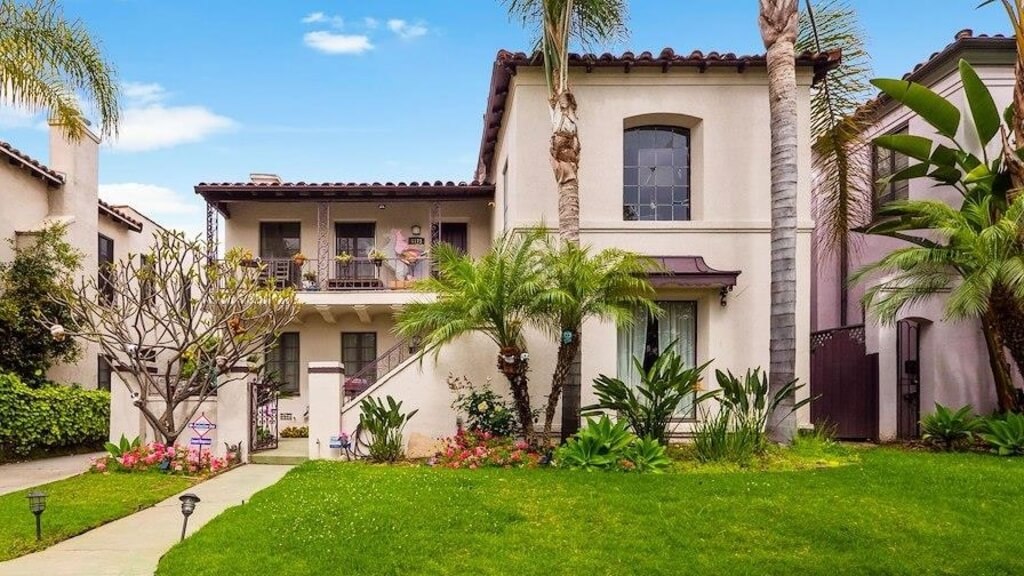
The beauty of Spanish-style home elements also extends to the exteriors of the houses. However, we can understand the evolution of its exteriors once we learn more about its history.
“To me, Spanish Colonial homes are the type where you can’t help but feel comfortable — the kind where you kick off your shoes at the door and pad around in bare feet,” notes Lisa Stacholy. With plenty of alfresco gathering spaces, these rambling homes express a sense of relaxation and foster a connection to nature and the surrounding environment.
If we look into the history, the Spanish architecture was first built in Spain around 400 years ago, in the 1500s. During the colonial revival movement, the style was born and soon became the primary construction style. The designs built during this cultural and artistic flourishing reflect the craftsmanship of the experts from that era. The Spanish homes of this time were built from indigenous components and featured thick, stucco-clad walls & limited ornamentation.
Later, around the 20th century, the Spanish style started spreading its influence over North America. The everlasting charm of the houses was perfect for a house in California; the reason? The design accommodates terraces and outdoor courtyards that are best suited for the open ocean.
Gradually, the wave of Spanish-style homes spread through the neighborhood, resulting in an adaptation of local needs and modernization. A variety of subsets of Spanish style started popping out under various names, such as Spanish Eclectic, Spanish Revival, Spanish Colonial, Mission Revival, and Moorish.
The most common parts with the influence of the Spanish style are Florida, California, and the Southwest.
Historical Overview
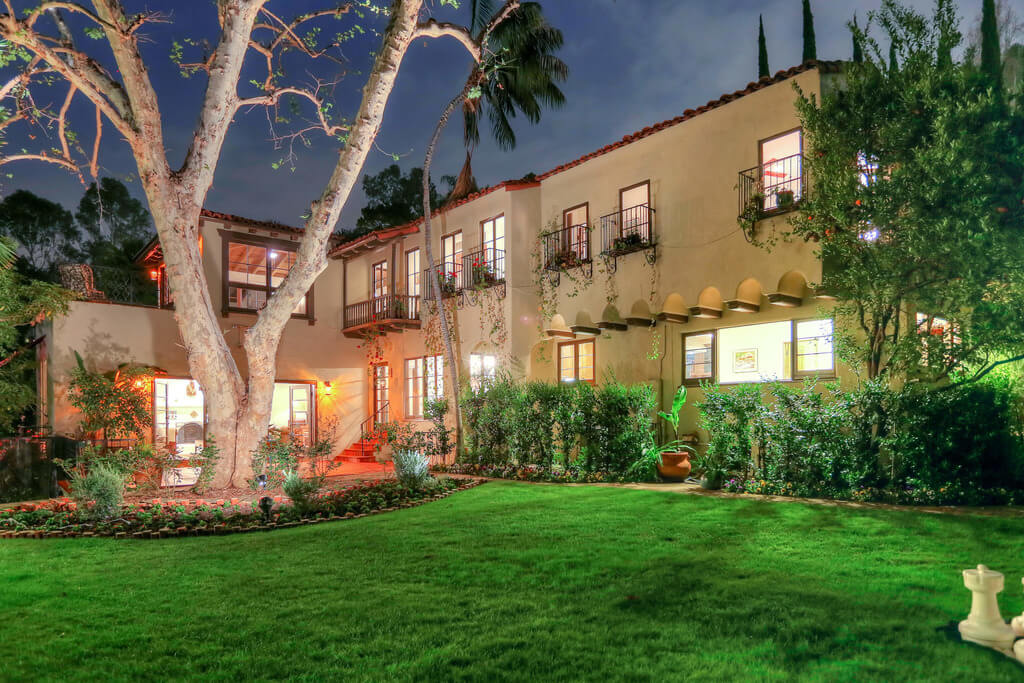
The first Spanish homes were built in the 1500s to 1800s when the architectural style was known as Spanish Colonial architecture. The buildings of their time captured the essence of the colonial era and were adorned with characteristic elements from that time. However, as time progressed, the style evolved, and the buildings constructed after that period(1800s) are typically referred to as Spanish Revival architecture or Eclectic. The houses effectively blended the contemporary elements with the dynamic forms.
Residents of that time easily adopted Spanish-style abodes because they were built using local materials. However, the use of local materials for building architecture also led to variations in style, which is why the Spanish homes in Mexico ( bright and vibrant) are different from the ones in Spain or Florida. For instance, You will observe the use of bricks in Arizona homes while coquina rocks are used in Florida homes.
Now, in the 1900s, a new architectural movement began in the United States called Spanish Revival. During this period, Americans started looking for inspiration from the past for building new architecture. The regions where the Spanish population established themselves found a heavy influence from the colonial architecture of their ancestors.
Rustic and simplistic ornaments found their way into the Spanish style, elevating the aesthetics of the Spanish homes. The period of this revival that brought new life into the existing elements came to be known as the Spanish Colonial Revival Architecture movement.
The Pivotal Moment in the History of the Spanish Architectural Movement
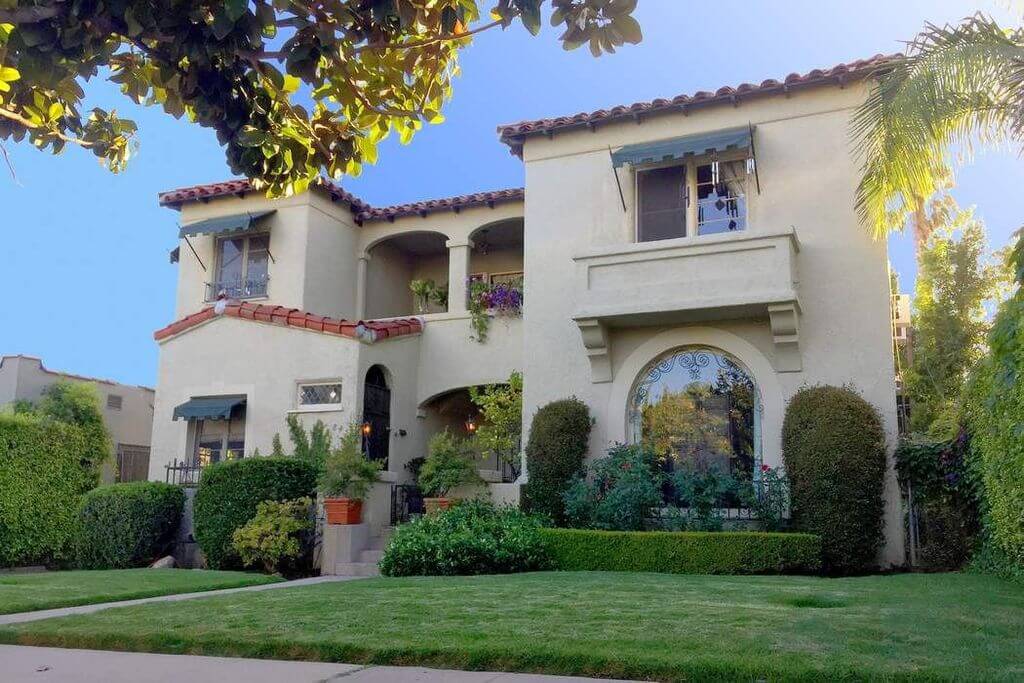
The Panama-California Expo in San Diego of 1915 highlights the Spanish-style movement. Spanish Architect Bertram Grosvenor Goodhue developed a team of architects and built an array of magnificent Spanish-inspired buildings. They used ornate stones and religious imagery to bring more life to the walls. The brilliant success that followed the festival led to the Spanish-style expansion in California and other parts of America.
Further, the expansion of the revolution can be seen if you look at the intricate work performed after the 1925 earthquake in Santa Barbara. The devastating earthquake allowed the architects to incorporate many Spanish elements.
Later, the influence of the Spanish style continued to evolve in New Mexico, and the distinct movement that followed was known as the Pueblo Revival movement. The revival movement features thick walls made out of clay, handmade tile, flat roofs, etc.
The evolution celebrated the history and heritage of the Spanish style while also making space for the new modern needs.
What Are the Different Types of Spanish-Style Homes?
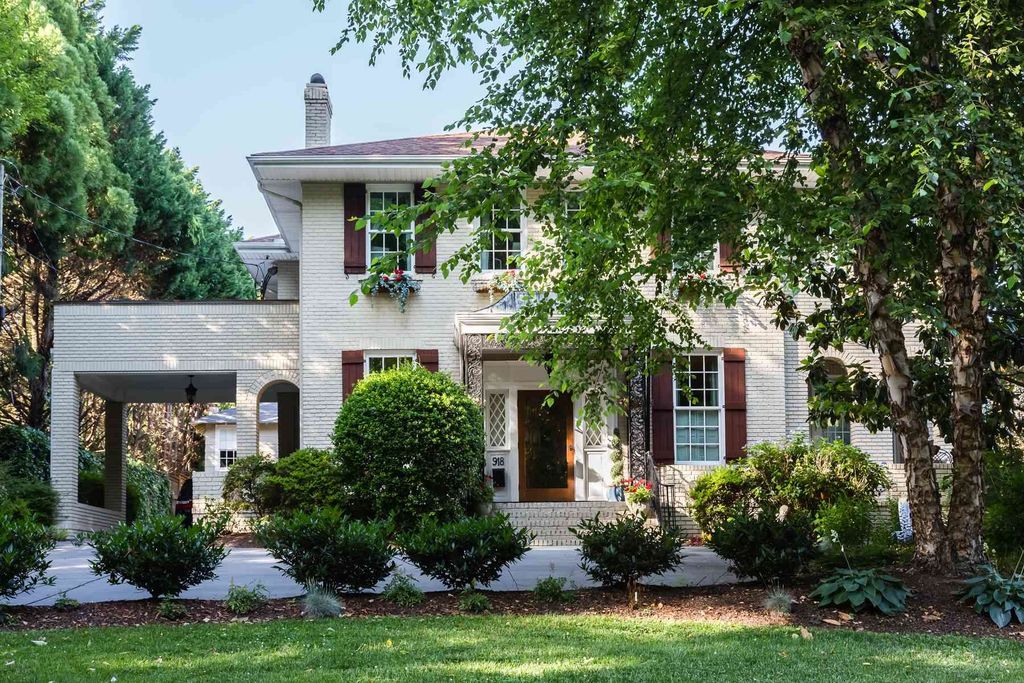
Most of the Spanish-style homes were built during the Spanish revival movement. The various substyles that emerged during the Revival movement are:
Mission Revival:
Mission Revival homes were inspired by the iconic Spanish missions. These homes were found predominantly in California. Mission revival homes showcase functional and aesthetically pleasing elements such as arched entrances, low roofs, and bell towers. Mission revival homes had striking stucco walls and tiled roofs that threw a warm and welcoming vibe.
Some famous examples are the Powers House in Los Angeles, The Canfield-Wright House, Santa Barabara Mission neighborhood.
Pueblo Revival:
The Pueblo Revival homes, often found in the American Southwest, have flat roofs, thick stucco walls, and visible and rounded roof beams, often referred to as “vigas,” which extend outside the home. Also, many Pueblo revival homes have walled courtyards and patios, providing a serene space to relax and unwind after long hours. The Pueblo homes are traditionally red earthen color, sometimes painted white or even bright colors.
Some famous examples are: La Fonda Hotel, Canyon Road Homes, Las Acequias Ranch
Monterey:
Thomas O. Larkin built the first Monterey home in 1835. His designs borrowed references across time and culture inspired by English and French homes of the period. Thomas’s house had adobe walls and a flat roof, giving a feel of French homes of the time. The house also features upper and lower balconies that are typically seen in French homes. The symmetrical exteriors are similar to that found in the English Colonial-style homes. This fusion of English and French architectural styles is extremely unique and charming.
Some famous examples are Larkin House, Jose Maria Alviso Adobe, and Mary C. W. Black Studio House.
Floridan:
Spanish colonizers who arrived in Florida built homes using local building materials, which gave houses a more traditional look and feel. Similarly, as the Spanish revival movement spread its wings, different leaders of the Spanish revival movement started building similar houses in various parts of Florida. The Florida Renaissance homes were heavily influenced by the Baroque and Moorish design elements. You will find houses adorned with decorative columns, geometric window shapes, and ornate facades.
Spanish Eclectic:
Modernization in the Spanish Revival movement is often termed as Spanish Eclectic. Eclectic homes have split-level shapes reminiscent of a ranch house, with terracotta roof tiles and stucco walls. A few other elements of Spanish Eclectic homes are bay windows or brick, beautifying the Spanish-style homes to the next level.
What Makes a House Spanish Style? What Are the Characteristics of Spanish Style?
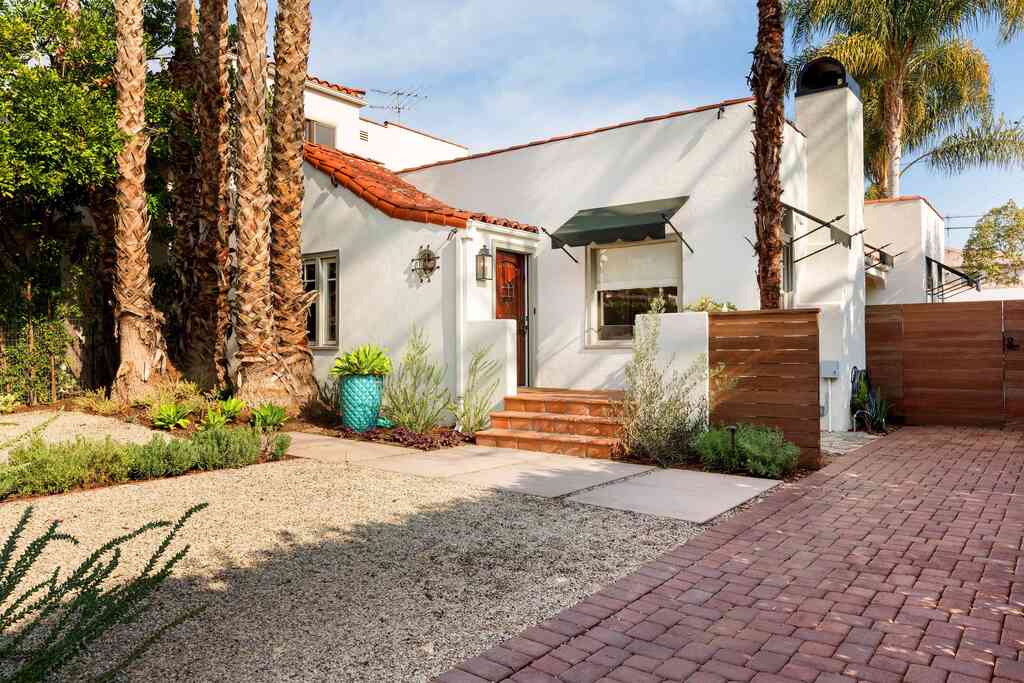
Where Freshness meets Mediterranean Charm:
Spanish-style homes are designed to bring a vibe of freshness and coolness into the house. On close observation, you will find the strong essence of Mediterranean building styles offering a unique experience. Features like stucco walls and terracotta roofs are a few striking elements from the time that evoke a sense of history and elegance.
The Revival houses that emerged during the 19th century took the Spanish style to a new level.Spanish Designers adorned these homes with captivating features such as exposed beams, wrought iron banisters, colorful tiles, and other beautiful elements.
The main characteristics of Spanish-inspired homes which can be identified from a distance are:
Single-Level Buildings:
Traditionally, the Spanish-style buildings were all single-level structures. Single levels provided simplicity and ease of access to the residents. Later, the style evolved to split-level designs for accommodating modern-day needs.
Stucco Walls:
One of the prominent features of Spanish-style homes is the stucco walls. These walls are usually thick and painted white to provide durability and aesthetic appeal to the house. The white paint keeps the interior of the houses cool amidst the hot temperature during the daytime. Additionally, these stucco walls absorb the heat and release it during the cooler night hours.
Turrets:
Spanish-style homes easily distinguish themselves with turret shapes, which you can find either on the corners or at the main entrance of the buildings. These are the highlights of the houses, creating a visually appealing look.
Red Tile Roofs:
Sloppy roofs and barrel tiles on the roof are the most distinguishing features of the big and small Spanish-style homes. The tiles are mostly red in color or brown, adding vibrancy to the exterior of the houses. To enhance the beauty and charm, some residents also choose to decorate their houses with overhangs made from wooden vigas.
Small Windows:
Spanish architects carefully plan Spanish-style homes, taking the humid temperature into consideration. Small windows serve a practical purpose by allowing cool air to flow in because of the air compression. Having a small window seems to be a sensible approach for developing modern Spanish-style homes in hot temperatures.
Courtyards:
Courtyards or backyards in Spanish-style homes are serene places to unwind yourself after a long working day. Skilled designers decorate them with lush gardens, fountains, and tiled pathways.
Parapets:
Parapets add a classical vibe to the Spanish-style homes. Architects construct Spanish homes in colonial and mission styles with parapets along the outer edges of walls. Parapets serve a functional purpose by giving a private space in the house.
Adobe Bricks:
Again, adobe bricks are practical elements of the desert environment. People typically find these bricks in the American Southwest and Mexico. The earthy hues and raw textures effortlessly mix with the dessert ambiance of the houses.
Simple Embellishments:
Spanish people love the simplicity of minimal decor. Every house adorns minimal ornaments that avoid being too gaudy.
The above-mentioned elements captivate the exteriors of Spanish-style homes. Now, let’s explore the interior style features that contribute to creating a warm and inviting ambiance.
Wooden Ceiling Beams:
The use of wooden ceiling beams looks like an interesting concept adopted in Spanish-style homes. The roof deliberately exposes its supporting beams and keeps them fully visible from the inside. When these beams extend to the exterior, they often earn the name “vigas.”
These vigas add depth and character to the design of the Spanish-style home exteriors.
Wrought Iron Elements:
Spanish-style homes often have wrought iron bars as a covering along the windows and shutters. Many houses also feature wrought-iron stair railings or chandeliers that enhance the overall aesthetic appeal of the houses.
The main reason behind using wrought iron metal deliberately is that it is less polished and gives a more weathered, authentic look.
Painted Tiles:
You will find Spanish homes decorated with terracotta tiling on the floor, accents, and backsplashes, adding an artistic touch to the interior of the house. The tiles come in either red or brown hues or feature Spanish-inspired designs and patterns to create a more vibrant feel.
Wall Niches and Alcoves:
We found this idea of utilizing the corner spaces at home extremely creative and intriguing. Spanish-style homes prefer built-in niches over furniture within the walls, a more practical approach to utilizing the spaces.
Dark Wood Doors and Frames:
Bright and vibrant wooden doors look extremely rich and warm in Spanish-style homes. The architects prefer using Spanish cedar and mahogany for creating vibrant doors.
Steel Lighting Accents:
As mentioned above, wrought iron or steel chandeliers adorn the houses, elevating the aesthetic appeal to the next level.
Archways:
One of the easiest ways to identify a Spanish-style home is by looking at the arches over the windows, doorways, and alcoves. Yes, the houses are full of it. Intricate details adorn these archways, crafting a grandeur look to the house.
Examples of the Spanish Style homes around the world:
1. Stunning Princeton Residence by Stocker Hoesterey Montenegro Architects
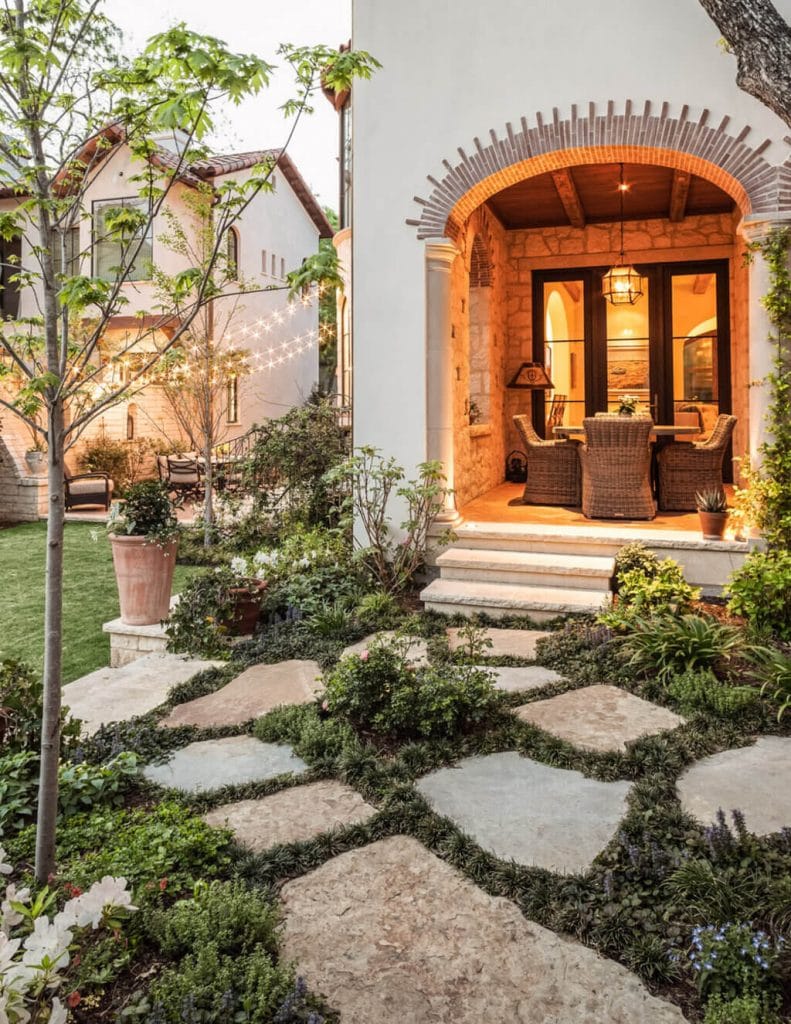
Stocker Hoesterey Montenegro Architects masterfully designed this traditional Spanish home, which features dark wooden oriel windows and castle-like stonewall fronts, radiating a sense of history and grace. Arched tops grace the main door, entryways, and massive windows, creating an aesthetically pleasing and inviting ambiance.
Furthermore, abundant greenery fills the house, achieving a perfect balance between earthy tones and straight lines.
You will also find Spanish characteristics such as massive glass windows, arched entryways with clay-tiled roofing, and soaring chimneys that adorn the house.
2. Lauren Conrad’s Former Pacific Palisades Home
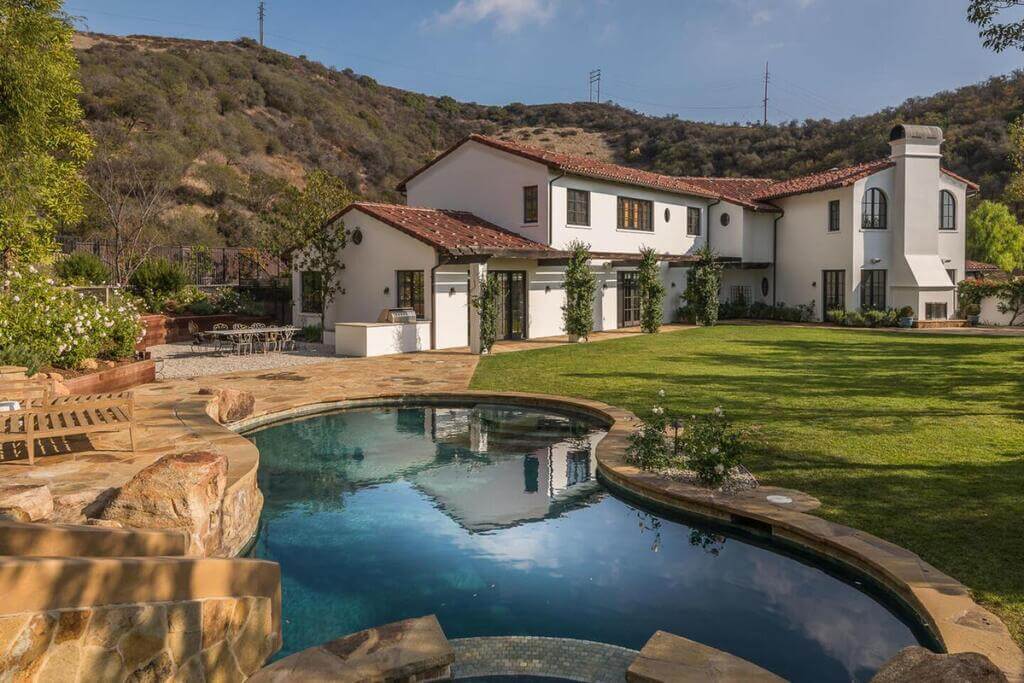
Lauren Conrad’s Spanish home throws an immense traditional charm of the Spanish style. A beautiful arched entryway lined with patterned tiles and topped with a wooden trellis welcomes you.
You will also find a touch of Mediterranean architectural elements in Lauren Conrad’s house. Lauren Conrad’s home also features a Juliette-style balcony with a view extending to an array of trees ending to the pool.
3. 1929 Spanish-Style Residence
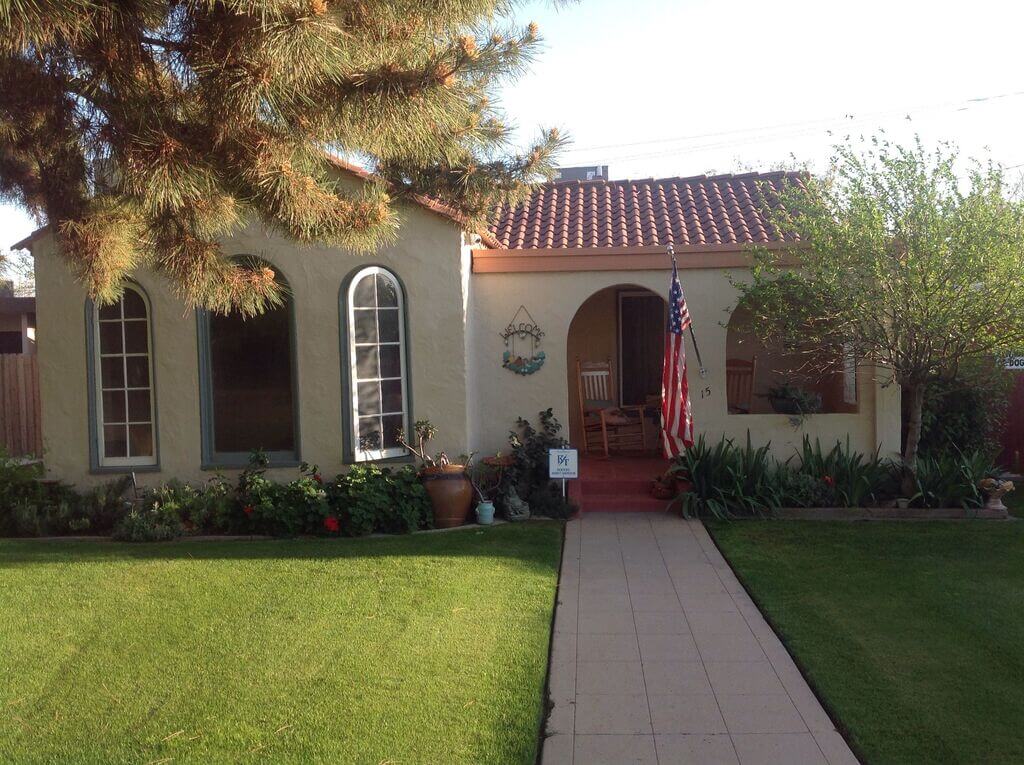
One of the greatest gems of the Spanish colonial revival style homes is the 1929 Spanish residence. This house features balconies and large windows that open to the backyard with a huge oval-shaped pool. Earthy tones paint the house, while abundant greenery surrounds it, filling the space with brightness.
The large glass windows fill up with bluish hues, reflecting the skies. This house is a masterpiece that captures all the elements of Spanish-style architecture.
Parting words:
Spanish-style homes are extremely warm and welcoming and are a place more than places to live. The houses, beautified with rustic elements of the Spanish style architecture, give a sense of individualism. Every corner of the Spanish home is full of life and tells a story. If you ever have the opportunity to explore these enchanting Spanish-style beauties, do not miss the chance. Beauty will not only add more words to your thoughts but also create memories in the heart.
In case you missed

